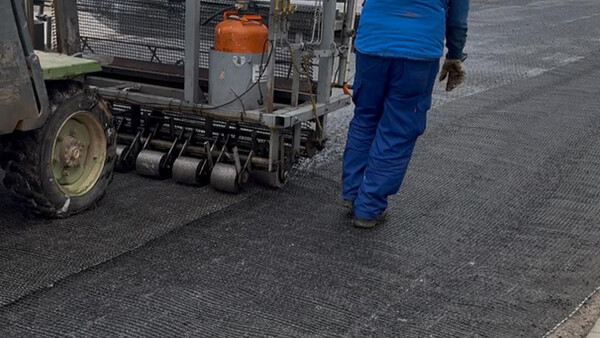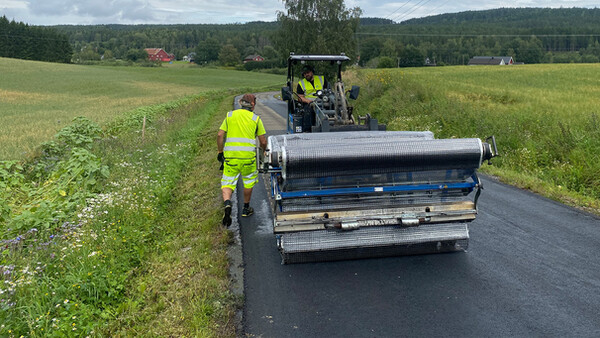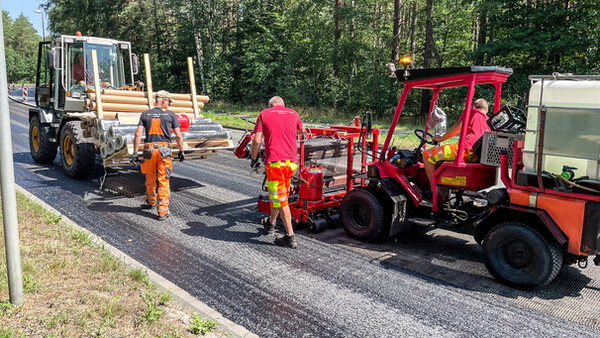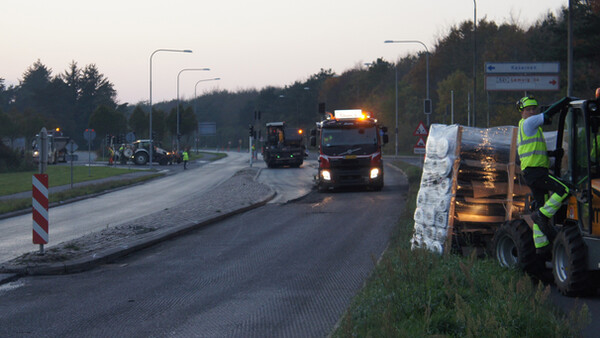Road surface reconstruction - Grabiszyńska Street - Wroclaw, Poland
Grabiszynska street is one of the key routes going into and out of the Southwestern City of Wroclaw in Poland. Dealing with daily commuters, as well as changable conditions with cold winters and warm summers, the road gets exposed to a variety of factors which can easily cause damage to the road surface. Prior to a change in the road network structure in the City, the road was exposed to high traffic volumes with a significant share of heavy traffic, due to it being one of the main routes in and out of the City.
On this page
- Topic
- Road surface reconstruction
- Object
- Grabiszyńska Street
- City
- Wroclaw
- State
- Silesia
- Country
- Poland
- Date
System
S&P Case Study
- Download PDF (1.79 MB)
Project Description
Situation
In 2003 the City decided to relay the road which was made up of historical 9 x 11 cm paving blocks. Laying a smooth asphalt structure over the top of paving blocks leads to many benefits for the road user including a more comfortable drive, as well as increased road safety.
However laying asphalt surfaces on top of paving blocks can quickly lead to problems with cracking on the wearing course due to possible differential movements and bonding problems between the asphalt overlay and the paving block foundation. On top of that challenge, time was particularly critical with any planned renovation of the road, due to high traffic numbers of commuters on weekdays as well as the tramline running across it. Road closures needed to be limited and disruption had to be kept to a minimum.
Solution
Due to the existing height constraints (drainage, technical road infrastructure, etc.), the plan was to cover the paving blocks only with a 2.5 cm thick layer of high-strength SMA asphalt. In preparation for the works, only approx. 50 % of the surface was brought up to level with a leveling course. This was due to the fact that certain areas of the road had been severely damaged during flooding in 1997, whereas in certain areas the paving blocks remained in good condition. As a wearing course, a thin specially mixed wearing course, similar to SMA, of only 2.5 cm was installed on top. The solution was considered a 'risk', due to the thinness of the wearing course layer, and the construction company only offered a guarantee of 6 months service for the life of the road following the installation.
On S&P's recommendation, the road owner decided to reinforce the braking and stopping zones in front of the traffic lights with S&P Carbophalt® G. The S&P asphalt reinforcement grids were installed in these specific locations in order to counteract the shear forces and point loads introduced into the thin asphalt layer by decelerating, stopping and accelerating traffic. The high-tensile carbon fibres in S&P Carbophalt® G are particularly suitable for this purpose, as they are capable of absorbing considerable forces even at the lowest elongations (>1.5 %) and anchoring them in the bond with the surrounding asphalt.
Project tracking
In the following years, S&P continued to monitor the condition of the road. The focus here was not only on the areas where S&P Carbophalt® G had been installed, but also on the areas where there was no S&P asphalt reinforcement grid present. During the project tracking it was clear to see that the areas with S&P asphalt reinforcement grid performed admirably and the road remained in good condition, however the areas where no reinforcement grid is present quickly suffered from excessive cracking and damage.
The pictures below illustrate and back-up how the S&P grid performed compared to road sections where no grid was present. The surfaces reinforced with the S&P asphalt reinforcements achieved a service life that exceeded that of the unreinforced surfaces by at least three times and this despite the increased loads and requirements in the intersection areas. It was not until 2011, 8 years after construction, that the first damage to the reinforced areas became visible. If this is compared to the 6 months that the contractor had predicted as the lifetime of the unreinforced surfaces, the performance of S&P Carbophalt® G in this application becomes more than apparent.
Material
S&P Carbophalt® G
S&P Carbophalt® G consists of carbon and glass fibre strands that are 100% impregnated with bitumen. The flexible, adaptable grid allows laying in curves as well as adaptation of the meshes to the subgrade or its surface structure. The granular aggregate of the new asphalt layers can penetrate the grid meshes, and a very high layer bond can be achieved via this interlocked connection. This ensures that the fibres are optimally bonded and can effectively absorb crack-generating tensile forces. This effectively prevents the reflection of cracks from the existing pavement into new asphalt layers and the resulting consequential damage. The reinforcement also increases the overall stiffness of the system and thus prevents future stress cracks.





























